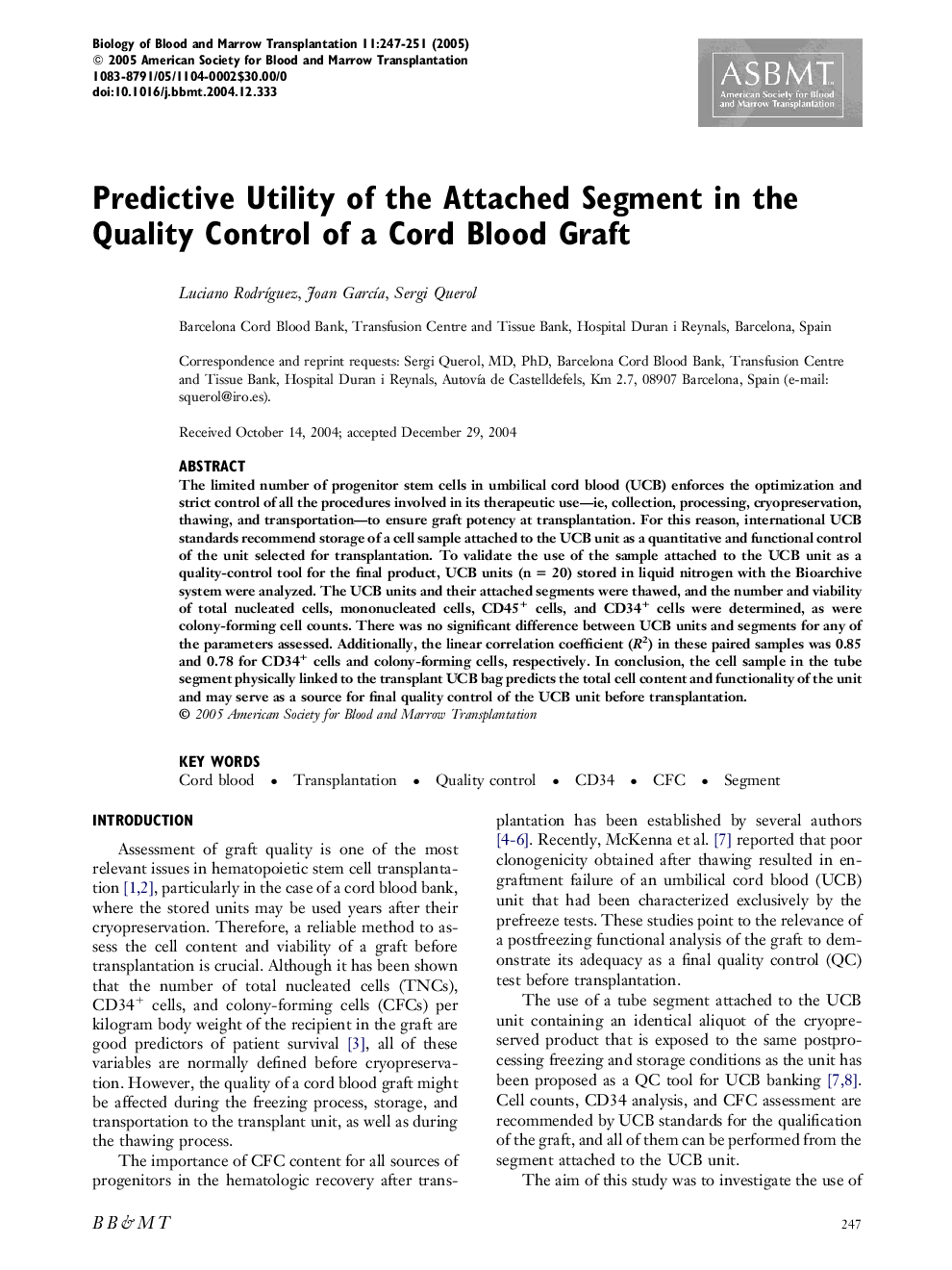| Article ID | Journal | Published Year | Pages | File Type |
|---|---|---|---|---|
| 9904232 | Biology of Blood and Marrow Transplantation | 2005 | 5 Pages |
Abstract
The limited number of progenitor stem cells in umbilical cord blood (UCB) enforces the optimization and strict control of all the procedures involved in its therapeutic use-ie, collection, processing, cryopreservation, thawing, and transportation-to ensure graft potency at transplantation. For this reason, international UCB standards recommend storage of a cell sample attached to the UCB unit as a quantitative and functional control of the unit selected for transplantation. To validate the use of the sample attached to the UCB unit as a quality-control tool for the final product, UCB units (n = 20) stored in liquid nitrogen with the Bioarchive system were analyzed. The UCB units and their attached segments were thawed, and the number and viability of total nucleated cells, mononucleated cells, CD45+ cells, and CD34+ cells were determined, as were colony-forming cell counts. There was no significant difference between UCB units and segments for any of the parameters assessed. Additionally, the linear correlation coefficient (R2) in these paired samples was 0.85 and 0.78 for CD34+ cells and colony-forming cells, respectively. In conclusion, the cell sample in the tube segment physically linked to the transplant UCB bag predicts the total cell content and functionality of the unit and may serve as a source for final quality control of the UCB unit before transplantation.
Related Topics
Life Sciences
Biochemistry, Genetics and Molecular Biology
Cancer Research
Authors
Luciano RodrÃguez, Joan GarcÃa, Sergi Querol,
